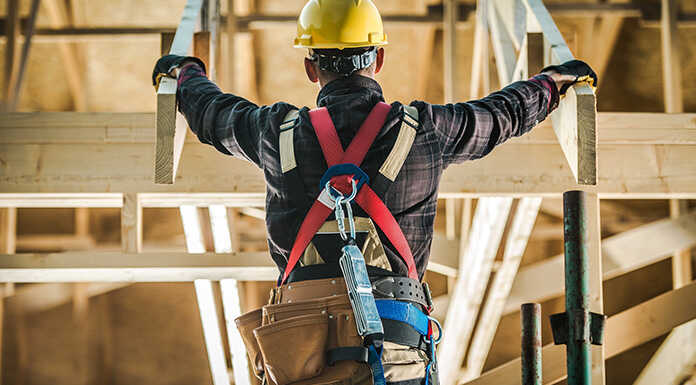When working from an elevated scissor lift (ANSI A92.6 series), workers need only be protected from falling by a properly designed and maintained guardrail system. However, if the guardrail system is less than adequate, or the worker leaves the safety of the work platform, an additional fall protection device would be required.
In regards to scaffolds, OSHA states employees working more than 10 feet above a lower level shall be protected from falls by guardrails or a fall arrest system, except those on single-point and two-point adjustable suspension scaffolds. Each employee on a single-point and two-point adjustable suspended scaffold shall be protected by both a personal fall arrest system and a guardrail.
Employers must provide fall protection for all affected employees. It is important to note that a competent person must determine the feasibility and safety of providing fall protection for employees erecting or dismantling supported scaffolds.
| Type of Scaffold | Fall Protection Required |
|---|---|
| Aerial lifts | Personal fall arrest system |
| Boatswains’ chair | Personal fall arrest system |
| Catenary scaffold | Personal fall arrest system |
| Crawling board (chicken ladder) | Personal fall arrest system, or a guardrail system, or by a ¾ inch diameter grabline or equivalent handhold securely fastened beside each crawling board |
| Float scaffold | Personal fall arrest system |
| Ladder jack scaffold | Personal fall arrest system |
| Needle beam scaffold | Personal fall arrest system |
| Self-contained scaffold | Both a personal adjustable scaffold arrest system and a guardrail system |
| Single-point or two-point suspension scaffolds | Both a personal fall arrest system and a guardrail system |
| Supported scaffold | Personal fall arrest system or guardrail system |
| All other scaffolds not specified above | Personal fall arrest system or guardrail systems that meet the required criteria |
Personal fall arrest systems include harnesses, components of the harness such as d-rings, snap hooks, lifelines, and anchorage point. Vertical or horizontal lifelines may also be used. Lifelines must be independent of support lines and suspension ropes and not attached to the same anchorage point as the support or suspension ropes. Personal fall arrest systems can be used on scaffolding when there are no guardrail systems.
Personal fall arrest systems used on scaffolds need to be attached by lanyard to a vertical lifeline, horizontal lifeline, or scaffold structural member. Vertical lifelines cannot be used when overhead components, such as overhead protection or additional platform levels, are part of a single-point or two-point adjustable suspension scaffold.
Vertical lifelines should be fastened to a fixed safe point of anchorage when used. They should also be independent of the scaffold, and shall be protected from sharp edges and abrasion. Safe points of anchorage include structural members of buildings, but do not include things like standpipes, vents, other piping systems, and electrical conduit. Vertical lifelines, independent support lines, and suspension ropes should not be attached to each other. They should not also be attached to or use the same point of anchorage. They should not be attached to the same point on the scaffold or personal fall arrest system.
Horizontal lifelines should be secured to two or more structural members of the scaffold. They may also be looped around both suspension and independent suspension lines (on scaffolds that are equipped) above the hoist and brake attached to the end of the scaffold. Horizontal lifelines should not be attached only to the suspension ropes.

















